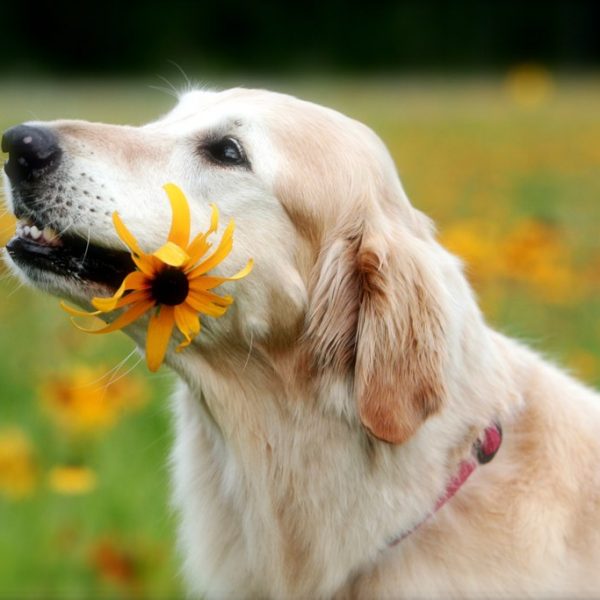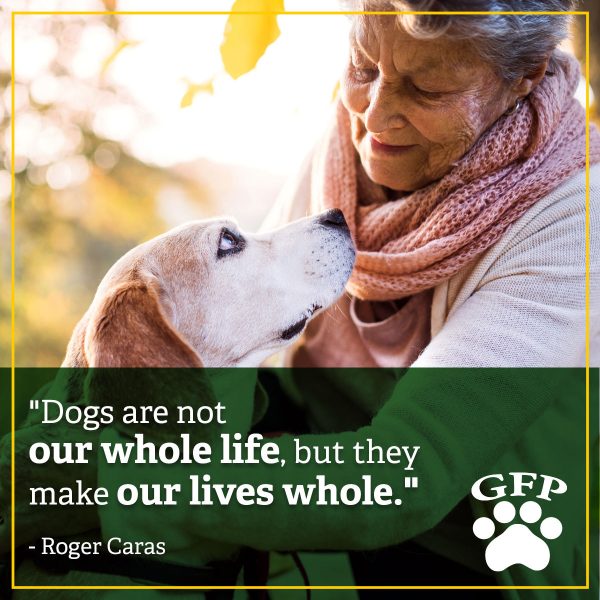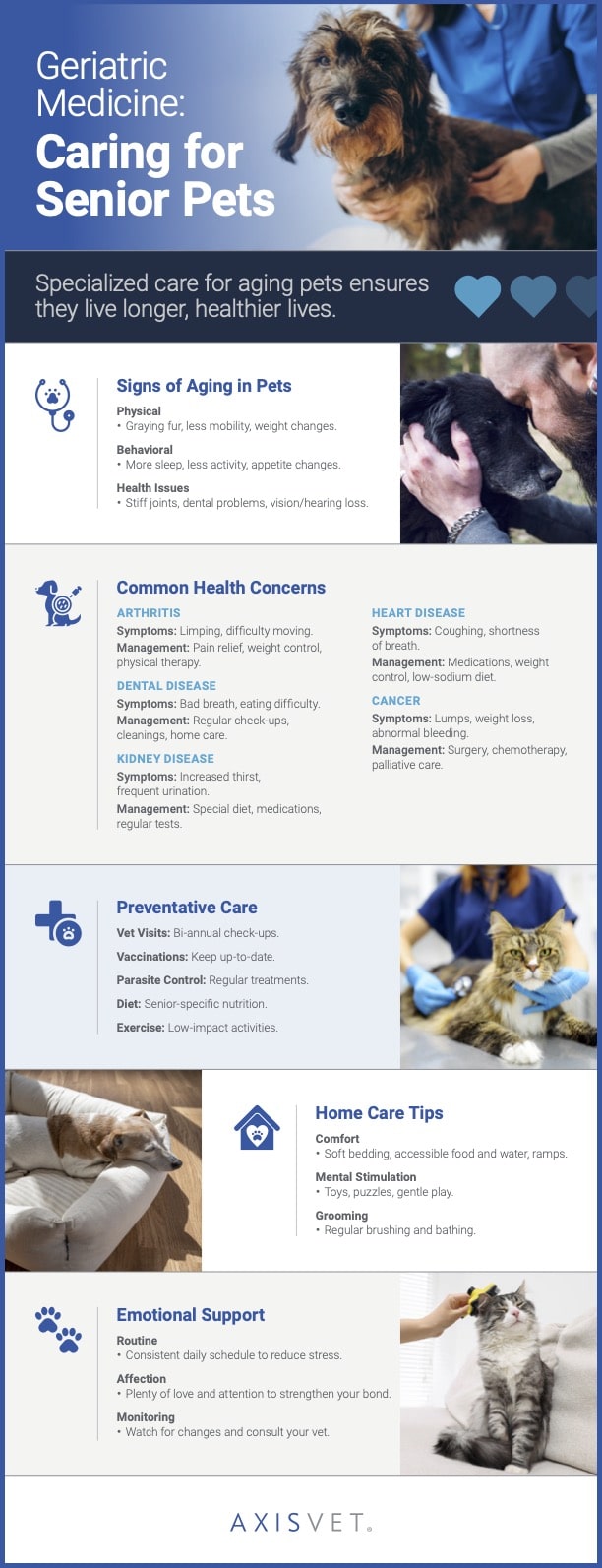How to Care for Senior Dogs
 It’s easy to think of our dogs’ ages in human years, but their bodies age faster than ours do. So, although your pupper may be 4 years old, they may be well on their way to a “mid-life crisis”! Most dog breeds gain senior status around 7 years old. For giant breeds and some large breeds, it can happen sooner, around 6 years old. Don’t be fooled by their senior status; these older dogs still have plenty of life left in them! But, they may need a little extra TLC. Here are some tips on how to care for senior dogs:
It’s easy to think of our dogs’ ages in human years, but their bodies age faster than ours do. So, although your pupper may be 4 years old, they may be well on their way to a “mid-life crisis”! Most dog breeds gain senior status around 7 years old. For giant breeds and some large breeds, it can happen sooner, around 6 years old. Don’t be fooled by their senior status; these older dogs still have plenty of life left in them! But, they may need a little extra TLC. Here are some tips on how to care for senior dogs:
1. Visit the Vet Regularly
You should be taking your dog to the vet regularly throughout their life. As your pup starts graying around the muzzle and getting older, regular vet visits become even more important. You may want to consider increasing visits from once to twice a year. Keeping frequent tabs on your dog’s body condition is also a good idea.
You should ask your vet to do this. They can also show you how to do it at home, so you can keep tabs in-between visits. Keep an eye on your dog when you are in between vet visits and take note of any changes you see.
Most of it will likely be symptoms of normal aging, but getting in the habit of paying closer attention can help you identify any early warning signs of something more serious. For example, dogs staring at the wall could be a normal thing, but if your dog is aging and this a new behavior paired with other symptoms, it could be a sign of cognitive decline, Canine Cognitive Dysfunction Syndrome, or a developing health issue.
2. Implement a Fortified Diet
As your pup ages, their metabolism is going to slow down and, much like when they were a puppy, they’ll need more nutrients to stay healthy. Switching your senior dog to a high-quality diet is the first step.
Your vet can help you determine what the right fit is for your dog’s age and lifestyle. From there, it’s just a matter of reading the labels and trying them until you find the right fit for your pup. With the approval from your vet, you can also include fatty acids, like DHA and EPA, in your dog’s diet to help alleviate joint issues. Supplements that include glucosamine and chondroitin can also help with mobility and joint issues.
A new diet is especially important if your dog is entering the “golden years” with a lot of extra weight. Overweight dogs tend to have a higher risk of disease and more trouble with mobility and their joints as they age. With a specially formulated diet and exercise, you can help your overweight dog get healthy.
3. Don’t Forget to Exercise
As your dog ages, they may begin to slow down and tire out more easily when playing. Let them rest, but make sure you and your dog are still spending some time moving around. This will help keep your dog lean, while also engaging their joints and muscles. Making sure they have plenty of toys available can help encourage play and movement as well.
If arthritis and achy joints are keeping your dog from moving around, you can try going swimming or enrolling in a more structured canine hydrotherapy program. This will help get them moving without putting extra pressure on sore joints. You may even find their mobility improving after a few sessions in the water!
4. Dental Care Matters
Much like humans, good dental care matters to your dog’s health throughout their life. Gum disease and dental problems cause a lot of pain for dogs and can lead to more serious diseases.
By cleaning your dog’s teeth regularly, you can help their mouth stay healthy and potentially help stave off other diseases too. If it’s a little late to introduce your pup to a toothbrush, there are dental treats and special toys that can help keep their teeth clean.
5. Consider Special Accommodations at Home
As your dog gets older, they may develop balance issues, which could be related to vestibular disease, and other health issues. It may become harder and harder for them to get around the house, especially if they start developing arthritis. But, there are a few ways to help an arthritic dog and help them get around easier and be more comfortable.
If your dog has achy joints, upgrade their doggie bed. Softer bedding or a dog bed made specifically for senior dogs may help ease aches and pains. It will also give your dog a more comfortable place to rest. If you have stairs that your dog can’t avoid or a favorite couch they can no longer jump on easily, installing ramps can be a big help and give them a low-impact way to get up and down.
Whether just getting started with a puppy you get to watch grow or helping your buddy out as they grow older, these tips will help you care for a senior dog, so you can focus on enjoying the time you have together.
Check out this infographic guide from AxisVet for more tips for caring for senior pets.


